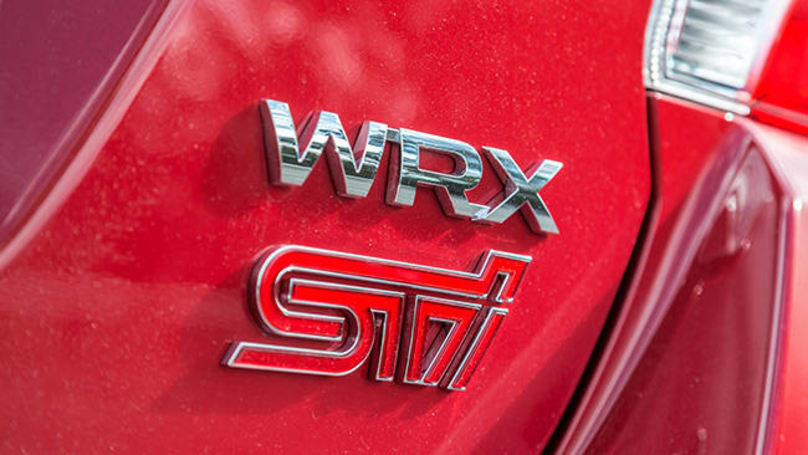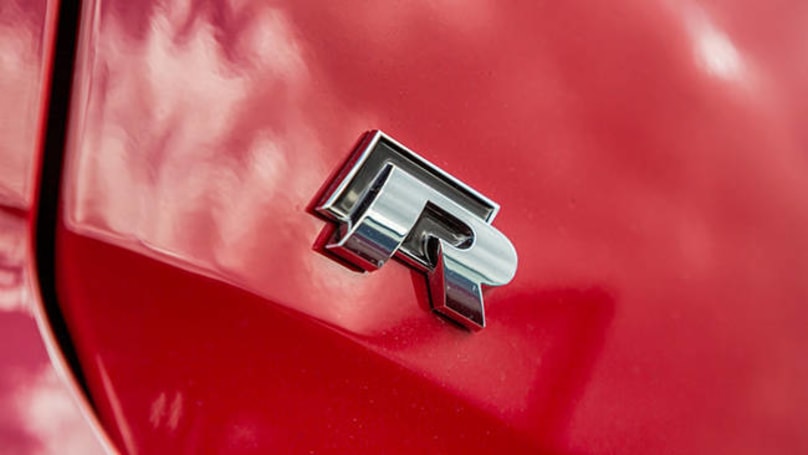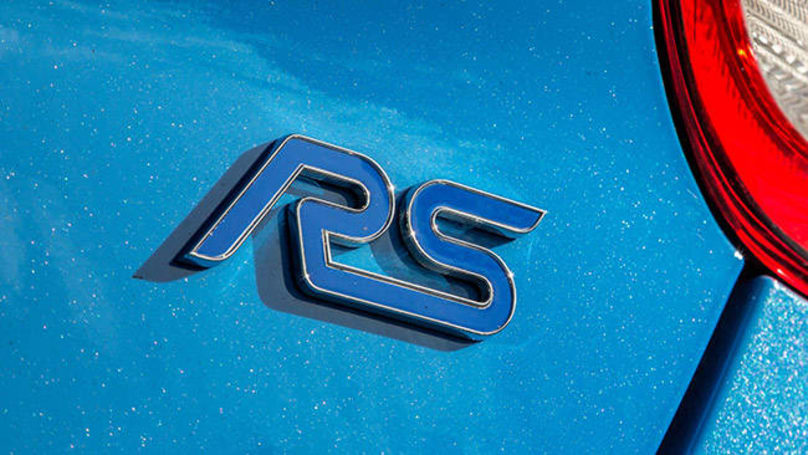
Chevrolet Corvette 2025 review: E-Ray
When mainstream brands decide to build supercars, magic happens: Ford with the...
Browse over 9,000 car reviews
Joshua Dowling road tests and reviews the VW Golf R, Ford Focus RS and Subaru WRX STI with specs, fuel consumption and verdict.
Europe may have invented the hot hatch, but Subaru was the pioneer of the affordable all-wheel-drive "pocket rocket".
In the 1990s this new combination of power and agility won the Japanese brand street cred among enthusiasts -- and infamy among bad guys who were quick to establish the Subaru WRX's credentials as a getaway car.
These days Subarus are all but theft proof and villains have developed a taste for high-powered machinery from Mercedes, BMW and Audi.
Subaru now faces a new battle.
Europe fought back with the Volkswagen Golf R, and now there is a new kid on the block.
Ford has rejoined the turbo all-wheel-drive fold after a 20-year absence, with the Focus RS.
As the last in, it better be best dressed.
Subaru WRX STI
The regular Subaru WRX is potent enough, but the version we have here is the $49,490 WRX STI, which comes with a more powerful 2.5-litre turbo four-cylinder (as opposed to the WRX's 2.0-litre turbo) and gains bigger brakes and tougher driveline hardware.
In contrast with the others, the WRX STI is a sedan. Subaru ditched the hatch as the booted version accounted for the majority of sales.
Aside from the boy-racer rear wing and bonnet scoop, the WRX STI has an understated rather than bold design; most of Subaru's energy has been focused on making it go, stop and turn.
That said, the interior has improved markedly, with soft-touch materials, a digital speed display, a meaty flat-bottomed steering wheel, and mod-cons such as premium audio, push button start, dual zone air-conditioning and a rear camera.
As soon as the engine fires there is no mistaking the sound for anything else. The Subaru's unique engine design gives it a distinctive burble.
Enthusiasts call it character, detractors call it gruff.
Once the rev needle passes 3500rpm, all hell breaks loose.
Either way, it gets the job done -- once you're in the right rev range.
Modern turbo engines have all but eliminated the delay in power delivery from low revs, but the Subaru is still old school in this regard.
Not much happens below 3500rpm, but once the rev needle passes that point, all hell breaks loose and the STI makes up for all the time that felt lost in the preceding seconds.
Subaru claims a 0 to 100kmh time of 4.9 seconds. But the best we could achieve using satellite-based timing equipment was 5.2 seconds. And we had to be brutal to limbo to this number, with a severe high rev start that came with a loud thump each time the clutch engaged.
The WRX STI needs to grab third gear to hit 100km/h (second tops out at 90km/h). When you're on the move, and providing you keep the revs close to or above 3500rpm, the Subaru feels invincible.
However, the engine's "sweet spot" has a narrower range than the other cars here.
The all-wheel-drive grip is superb, but the steering feels unevenly weighted (from too heavy to too light, depending where you are in a corner). And you can feel the front tyres scramble for grip out of a bend.
The brakes get the job done, and we experienced no fade. But they have a wooden rather than a precise feel, and the front discs are the smallest among this trio.
Volkswagen Golf R
The moment you sit in the Volkswagen Golf R it feels like you've stepped up a class.
The presentation of the interior, the instruments, the switches and the materials are all a step above the other two cars here.
But it comes at a cost. The Golf R is about $5000 dearer than the others, at $55,240. The model we tested, with options such as a sunroof and radar cruise control, among other luxuries, cost $61,440.
Unlike the Subaru and the Ford, which are six-speed manual only, VW gives Golf R buyers a choice between auto or manual; we've chosen the more popular six-speed twin-clutch auto version of the Golf R.
While some enthusiasts turn up their noses at anything other than a stick shift, the reality is twin-clutch gearboxes are better at getting the most out of a performance car.
Exhibit A, Your Honour: the majority of new Porsche 911s sold now have twin-clutch automatic gearboxes.
The gear changes occur in milliseconds, which means very little time or power is lost during acceleration (as it would if a clutch pedal needed to be engaged manually), and the driver can shift up or down a gear or two mid corner without taking their hands off the steering wheel, via tap shift levers.
Indeed, the Golf R was quickest in our 0 to 100kmh test even though it has less power and torque -- and a smaller engine -- than the other pair.
With an artificial sound enhancer it sounds like a miniature BMW M5.
Volkswagen claims a 0 to 100km/h time of 5.0 seconds, but we achieved a time of a couple of 4.9 second times after a series of 5.1s without breaking a sweat.
The Golf R blats through the gears like nothing else, delivering brisk performance despite its smaller engine.
But of course it's not only about straight line speed.
It handles corners with ease and the brakes have a strong reassuring feel, although it's not as sharp as the Focus RS.
Despite riding on 19-inch wheels and tyres, the Golf R does an admirable job of soaking up bumps, and feels more cushioned than the other pair.
With an artificial sound enhancer, which pumps engine and exhaust noise into the cabin, it sounds like a miniature BMW M5.
Ford Focus RS
This is the car of the moment. It has motoring writers -- and safety campaigners -- in a lather, but for different reasons.
The enthusiast press have gone gaga over the world first "drift" mode in the Focus RS (which turns mere mortals into YouTube stunt man Ken Block at the press of a button, with an electronically controlled four-wheel skid).
Road safety authorities question the need for such a device in a road car, given the technology can only legally be used on a track.
There are ample videos on the internet showing how drift mode works; we were more interested in how this car performs as a daily driver.
Unlike the Focus ST, the sub-$40,000 front-drive hot hatch powered by a 2.0-litre turbo engine, the $50,990 Focus RS is all-wheel-drive and comes with a retuned version of the 2.3-litre turbo used in the Mustang.
It has the most power among this trio, but it's also the heaviest.
Ford says it can do the 0 to 100km/h sprint in 4.7 seconds, but the best we could manage was 5.2 seconds, a full half a second away from the manufacturer's claim, despite using launch mode which lets the Focus RS off the leash like a rally car.
The Ford has the advantage of being able to reach 101km/h in second gear, saving valuable fractions of a second than if it required a gear change into third to get to 100km/h.
But the 0 to 100km/h time only tells part of the story. Once it's on the move, the Focus RS is easily the most muscular of these three.
It's as if the Focus RS is an extension of your body.
As with the Subaru, Ford has invested most of its energy into making the Focus RS handle, stop and go.
For that reason the interior is only a mild makeover of the standard car; high-sided Recaro sports seats keep the driver and front passenger pinned, but there are no seat-mounted side airbags.
There are two front airbags and two full length head-protecting curtain airbags that drop down from the roof, for a total of four. Both the Subaru and VW have seven airbags each.
It's a good thing the seats are so tight because the cornering grip from the Focus RS is astounding.
The steering is eerily precise and perfectly weighted, more so than the other cars here.
The whole package instils confidence, it's as if the Focus RS is an extension of your body.
Not only are the front brakes the biggest here, they also have the sharpest and most consistent feel.
We tested the car with standard (but still grippy) Michelin tyres. Even stickier rubber and lightweight wheels are available as a $2500 option.
A nice touch: the Focus RS delivers an exhaust crackle on most gear changes.
Downsides? It uses more fuel than the others if you choose to explore its potential.
Each of these cars represent incredible performance for the money.
But if we were to rank them, the Subaru would be first off the list mainly because its engine has a narrow power band, the brakes aren't as reassuring as the other cars tested and the steering feel is not as nice.
The Golf R is a sleeper. It has blistering performance in an incognito package, and a level of luxury and comfort the others can't match. But those advantages come at a price.
The Focus RS ranks at the top of this test (and presumably, many other comparisons) because it provides exhilarating performance and superb handling -- even with all its safety modes activated -- for a bargain price.
2016 Subaru WRX STI specifications

Likes
Old school turbo rush
Boxer engine sound
Upgraded interior
Dislikes
Narrow power band
Brakes have a wooden feel
It's hard to extract a quick 0 to 100km/h time without hurting the car
Price from: $49,490 plus on-roads
Warranty: 3 years/unlimited km
Capped servicing: $2218 over 3 years
Service interval: 6 months/12,500km
Safety: 5 stars, 7 airbags
Engine: 2.5-litre 4-cyl turbo, 221kW/407Nm
Transmission: 6-speed man; AWD
Thirst: 10.4L/100km
Dimensions: 4595mm (L), 1795mm (W), 1475mm (H), 2650mm (WB)
Weight: 1525kg
Spare: Space-saver
0-100km/h: 4.9 secs (5.2 secs on test)
2016 Volkswagen Golf R specifications:

Likes
The easiest to live with day to day
Luxurious cabin and appointments
Ride comfort, despite 19-inch wheels
Dislikes
Steering and handling lack the crispness and precision of the Focus RS
Expensive servicing after three years
It's the dearest among this trio
Price from: $55,240 plus on-roads
Warranty: 3 years/unlimited km
Capped servicing: $1605 over 3 years
Service interval: 12 months/15,000km
Safety: 5 stars, 7 airbags
Engine: 2.0-litre 4-cyl turbo, 206kW/380Nm
Transmission: 6-speed DSG; AWD
Thirst: 7.1L/100km
Dimensions: 4264mm (L), 1799mm (W), 1442mm (H), 2620mm (WB)
Weight: 1435kg
Spare: Space-saver
0-100kmh: 5.0 secs (4.9 secs on test)
2016 Ford Focus RS specifications

Likes
Epic engine power across the rev range
Superb steering, precise handling
Strong brakes with precise pedal feel
Dislikes
Only four airbags
No spare tyre of any description
Interior is not special enough
Price from: $50,990 plus on-roads
Warranty: 3 years/100,000km
Capped servicing: $1125 over 3 years
Service interval: 12 months/15,000km
Safety: Not rated, 4 airbags
Engine: 2.3-litre 4-cyl turbo, 257kW/440Nm
Transmission: 6-speed man; AWD
Thirst: 8.1L/100km
Dimensions: 4390mm (L), 1823mm (W), 1472mm (H), 2647mm (WB)
Weight: 1575kg
Spare: None; inflation kit
0-100km/h: 4.7 secs (5.2 secs on test)
Comments